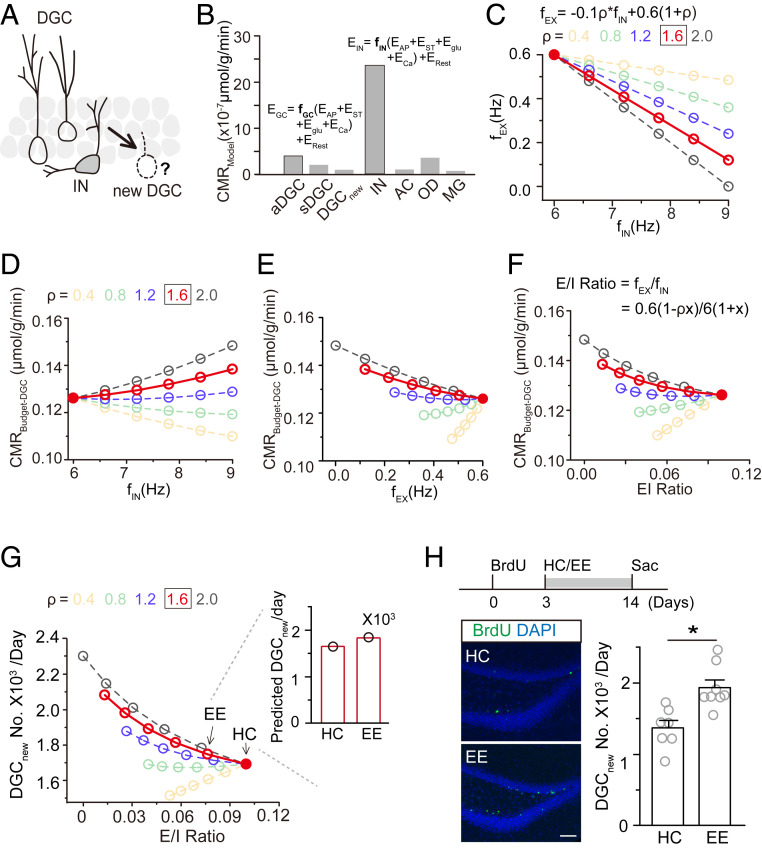Fig. 2.
Computed neural circuit activity in the dentate gyrus predicts experience-induced hippocampal neurogenesis. (A) Schematic drawing of the hypothesis that local dentate gyrus neural circuitry, including DGCs and interneurons (INs), regulates the survival of newborn neurons. (B) Modeled glucose oxidization of cerebral metabolic rate (CMR) for each major cell type in the dentate gyrus considering the cost of action potentials (EAP), synaptic transmission (EST), glutamate or GABA recycling (Eglu), calcium entry into neurons (ECa), and cell maintenance (i.e., resting potential and housekeeping metabolic consumption, ERest). Active granule cells (aDGC, firing rate = 0.6 Hz), silent granule cells (sDGC, firing rate = 0.06 Hz), and newborn DGCs (DGCnew) were classified as the excitatory (EX) population. GABAergic neurons were classified as the inhibitory (IN) population. Astrocytes (AC), oligodendrocytes (OD), and microglia (MG) were classified as the glial population. (C) Relationship between IN and EX activity. The firing rate of interneurons (fIN) was calculated as 6(1 + x) and of excitatory neurons (fEX) was calculated as 0.6 (1 − ρx). Here, x is the percentage change in the firing rate, whose decrease is proportional to an increase in the inhibitory firing rate with a scale quantified by the variable ρ, which was set to 0.4, 0.8, 1.2, 1.6, or 2. (D–F) Relationships between the energy budget for DGCs and IN activity (D), EX activity (E), and the E/I ratio (F). (G) Relationship between the number of new DGCs/d and E/I ratio. The Inset shows the predicted number of newborn neurons based on the E/I ratio. Arrows indicate E/I ratios in HC and EE conditions. The firing rate of interneurons was 6.0 and 6.8 Hz and of DGCs was 0.59 and 0.51 Hz in HC and EE conditions, respectively. (H) Representative images of ∼14-d-old BrdU+ newborn DGCs. (Scale bar, 50 µm.) (Right), numbers of new DGCs labeled by one-time BrdU injection (HC, n = 7; EE, n = 8; *P < 0.05; paired t test).

